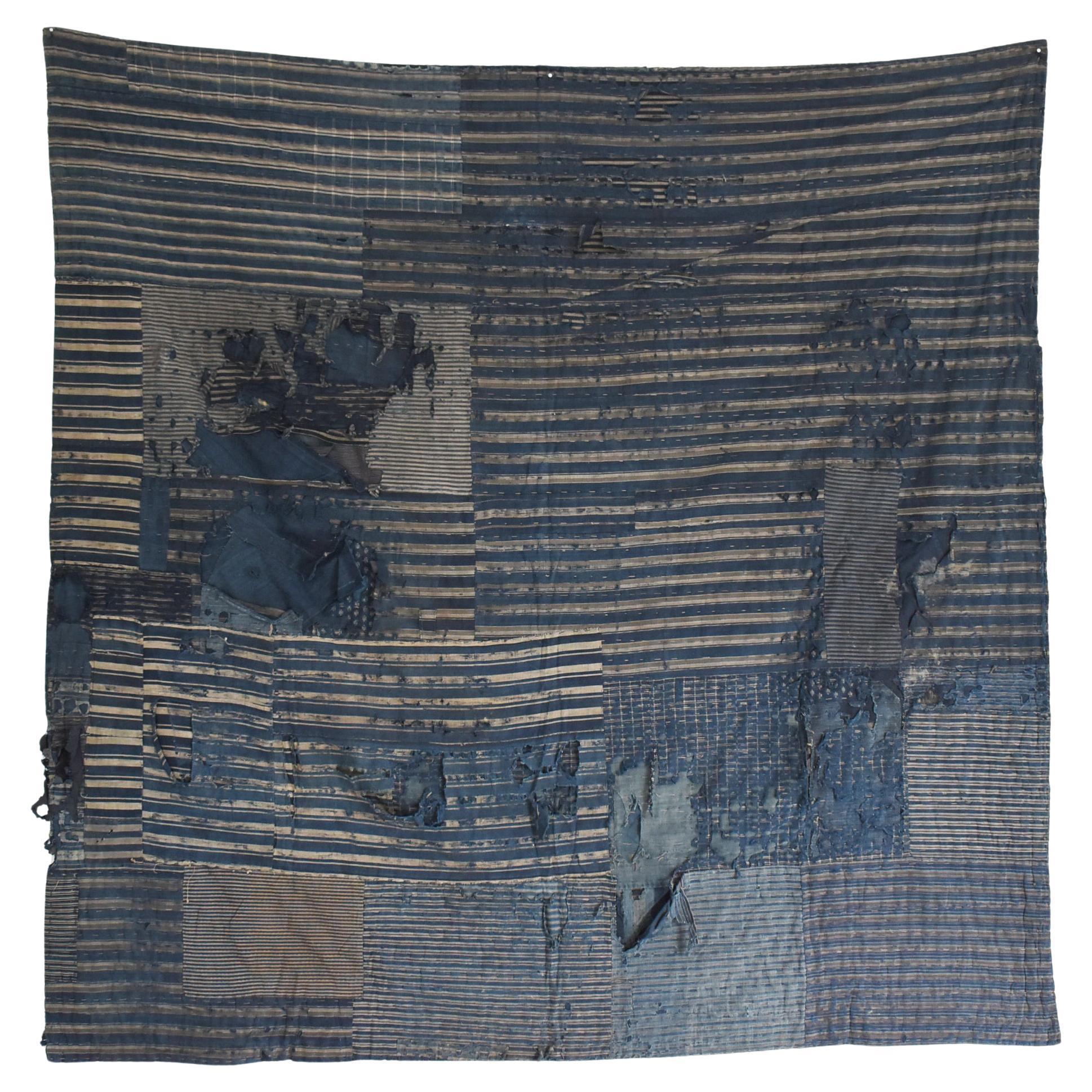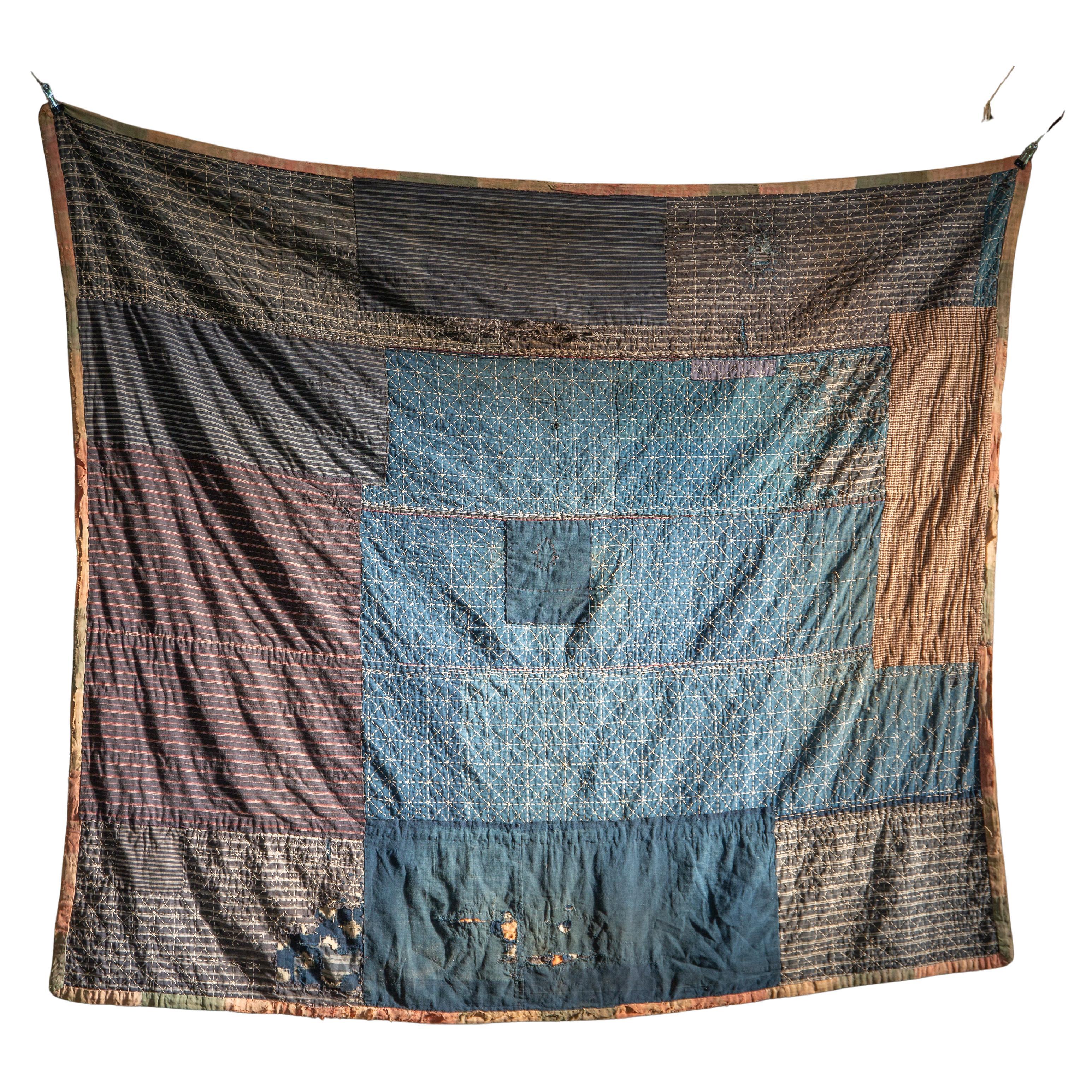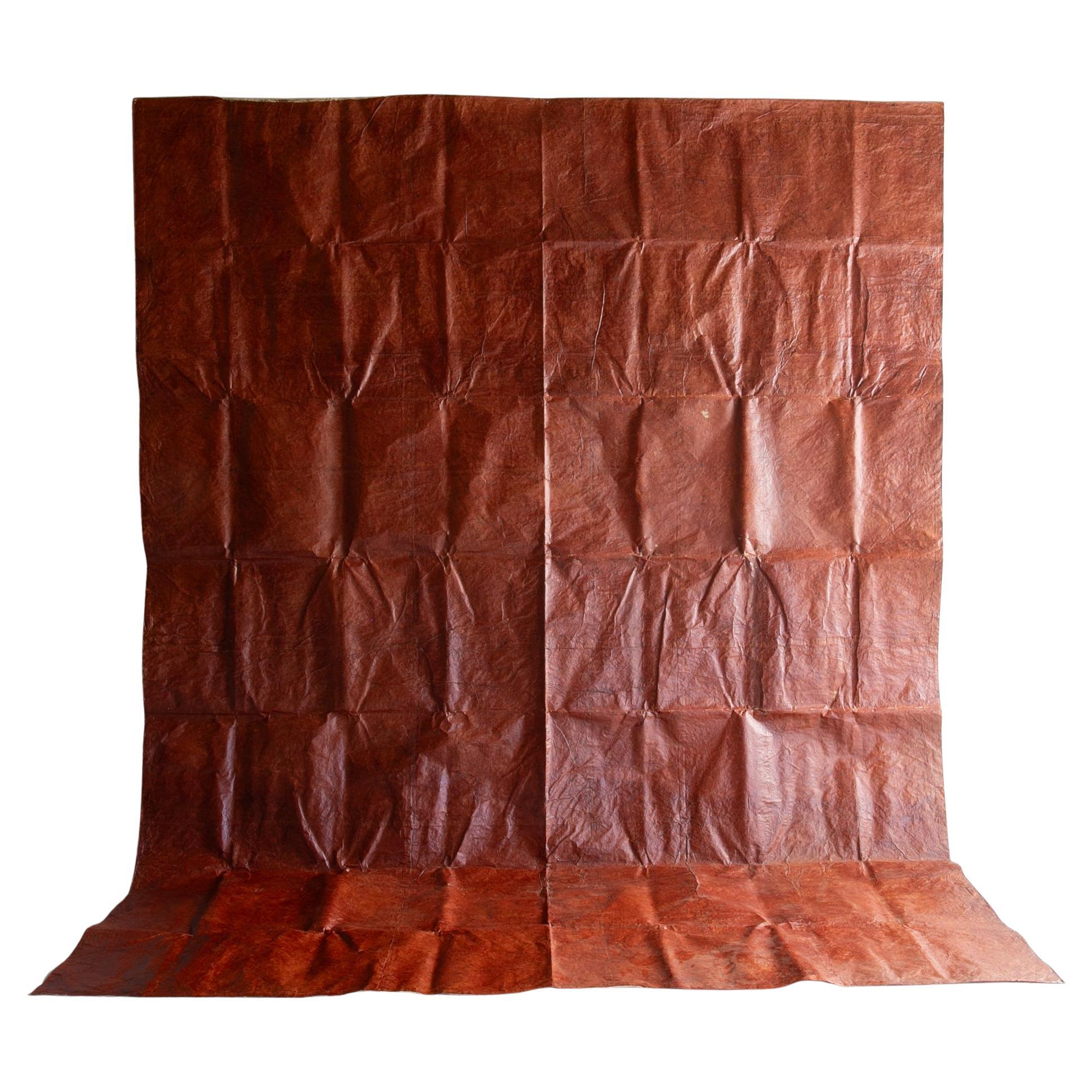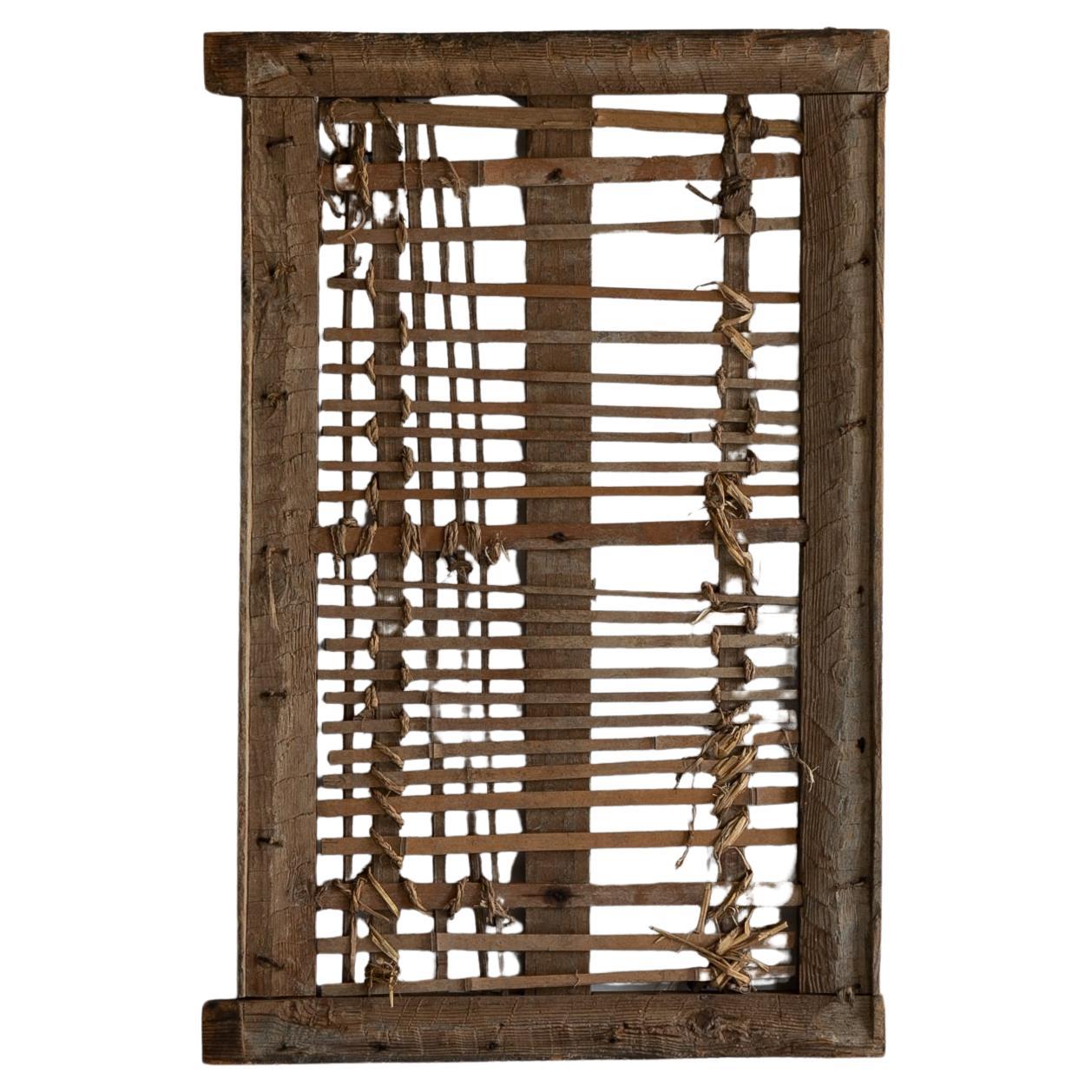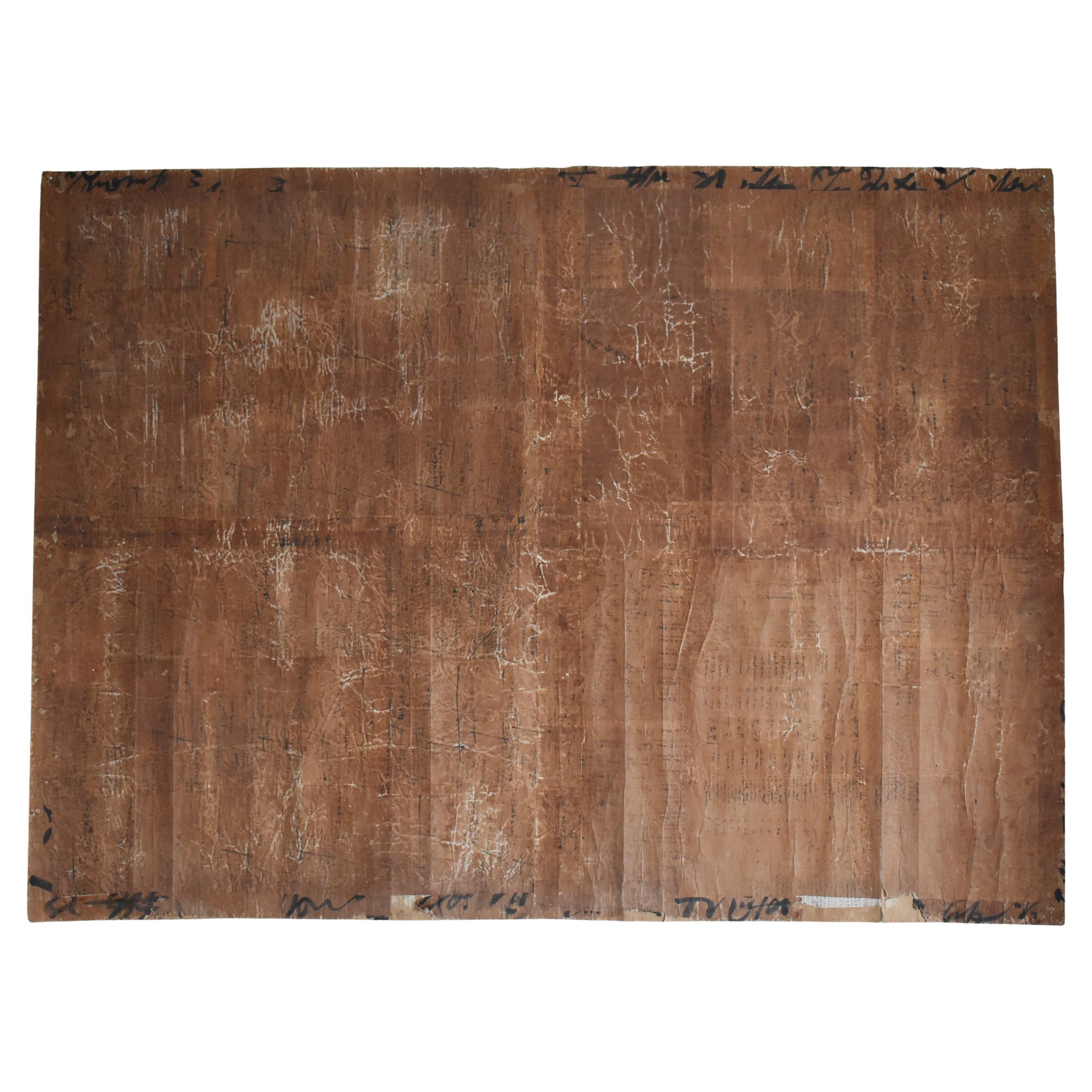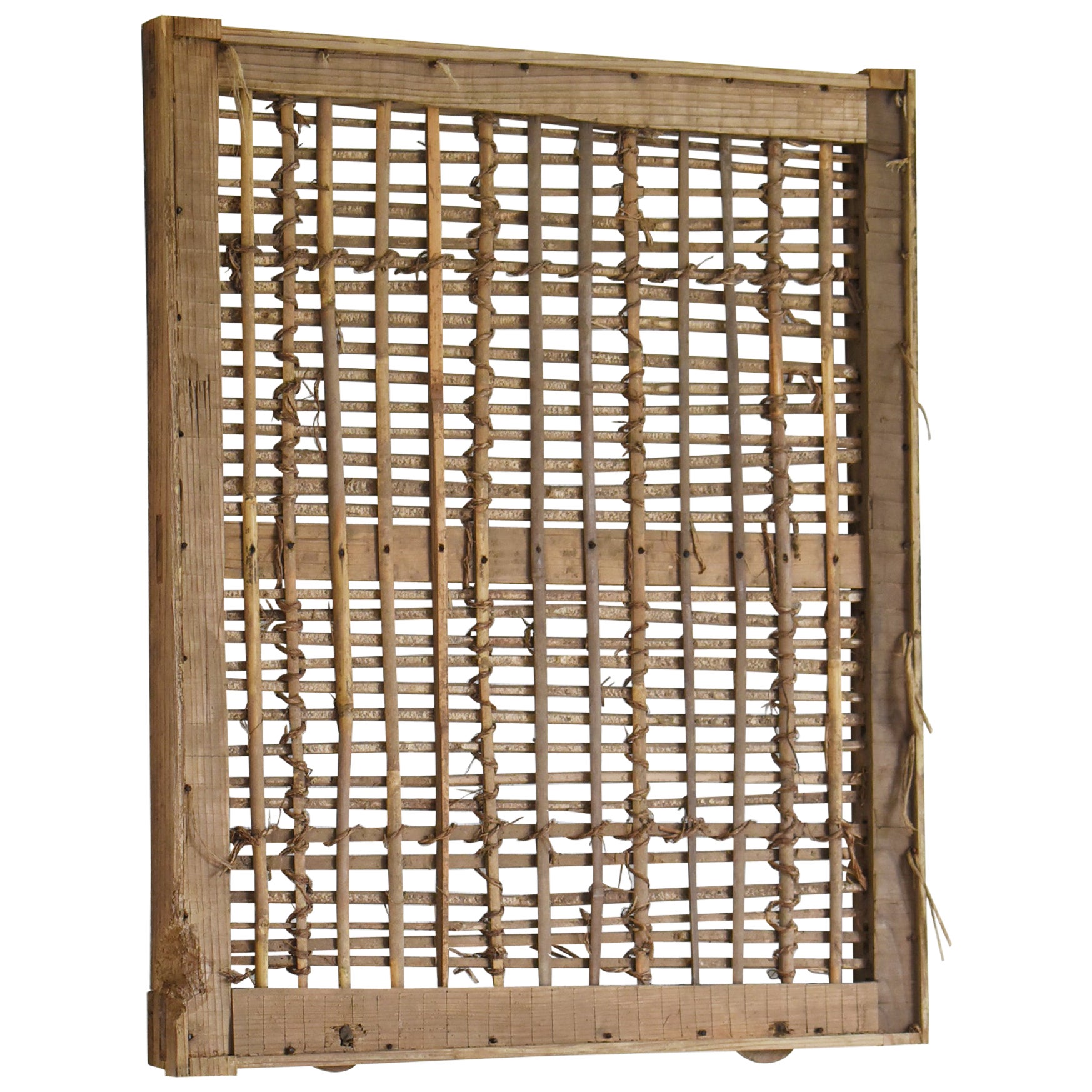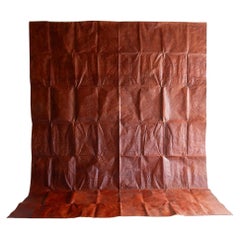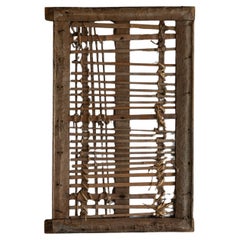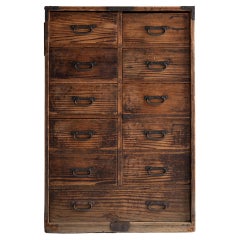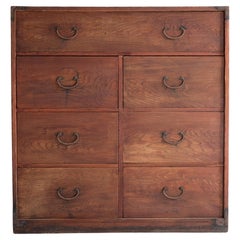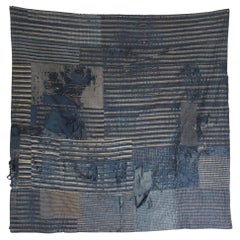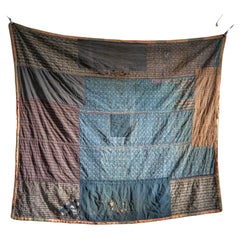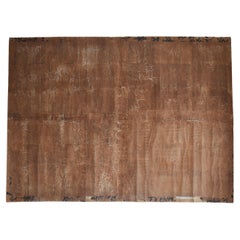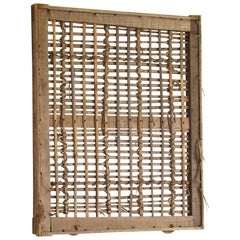Items Similar to Japanese Antique Rag "BORO" 1800s-1860s / Abstract Art Wabi Sabi
Want more images or videos?
Request additional images or videos from the seller
1 of 18
Japanese Antique Rag "BORO" 1800s-1860s / Abstract Art Wabi Sabi
$1,650
£1,250.95
€1,445.11
CA$2,336.10
A$2,620.66
CHF 1,354.96
MX$31,606.58
NOK 17,237.91
SEK 16,144.93
DKK 10,785.43
About the Item
This is an exceptional example of a Japanese *BORO* textile, dating from the late Edo period (1800s–1860s). Carefully preserved over generations, it embodies both the resourcefulness and the aesthetic sensibility of traditional Japanese life.
*BORO* refers to layered and repeatedly mended cloth, a practice born out of necessity during times of scarcity. Garments, bedding, and futon covers were never discarded but instead patched and reinforced, gradually transforming into textiles that carried the memories and lives of the family who used them. In northern Japan, especially in the Tohoku region, such thick *BORO* pieces were essential for protection against the cold.
This particular piece has a substantial presence, measuring approximately **1540 mm x 1340 mm (60.6" x 52.8")** with a thickness of around **2 mm**. Traces of cotton remain between the layers, reinforced with hand-stitched *sashiko* embroidery. The density and weight suggest that it may have originally served as a futon cover.
When displayed on a wall, its near-abstract composition reveals striking visual depth. The interplay of indigo hues, striped fabrics, and countless mending stitches creates a rhythmic surface that recalls modern abstract painting. Scratches, frays, and seams are not flaws, but rather the marks of time—accidental forms that now read as deliberate, poetic gestures.
In a contemporary interior, *BORO* transcends its origins as a utilitarian textile and becomes a true work of art. It lends warmth and authenticity to minimalist spaces and tells a quiet, timeless story. We recommend presenting it as one would a large canvas—hung on the wall as an object of contemplation.
For shipping, the textile will be carefully folded and securely packed.
- Dimensions:Height: 60.63 in (154 cm)Width: 52.76 in (134 cm)Depth: 0.12 in (3 mm)
- Style:Edo (Of the Period)
- Materials and Techniques:
- Place of Origin:
- Period:
- Date of Manufacture:1800s-1860s
- Condition:Wear consistent with age and use.
- Seller Location:Sammu-shi, JP
- Reference Number:1stDibs: LU5487246331782
About the Seller
5.0
Platinum Seller
Premium sellers with a 4.7+ rating and 24-hour response times
Established in 2015
1stDibs seller since 2020
1,615 sales on 1stDibs
Typical response time: 8 hours
- ShippingRetrieving quote...Shipping from: Sammushi, Japan
- Return Policy
Authenticity Guarantee
In the unlikely event there’s an issue with an item’s authenticity, contact us within 1 year for a full refund. DetailsMoney-Back Guarantee
If your item is not as described, is damaged in transit, or does not arrive, contact us within 7 days for a full refund. Details24-Hour Cancellation
You have a 24-hour grace period in which to reconsider your purchase, with no questions asked.Vetted Professional Sellers
Our world-class sellers must adhere to strict standards for service and quality, maintaining the integrity of our listings.Price-Match Guarantee
If you find that a seller listed the same item for a lower price elsewhere, we’ll match it.Trusted Global Delivery
Our best-in-class carrier network provides specialized shipping options worldwide, including custom delivery.More From This Seller
View AllJapanese Antique Paper Wabi-Sabi Washi
Located in Sammu-shi, Chiba
This rare shichou-maku (paper-hung curtain) was crafted during Japan’s Meiji period (late 19th to early 20th century).
It was originally used in sericulture rooms—spaces dedicated ...
Category
Antique Early 19th Century Japanese Edo Tapestries
Materials
Paper
Japanese Antique Door "Wall Decoration" 1860s-1900s / Abstract Art Wabi Sabi
Located in Sammu-shi, Chiba
This was a very old Japanese warehouse (kura) window sliding door.
It was made during the Meiji period (1860s-1900s).
The frame is made of cedar wood and the lattice is bamboo.
It w...
Category
Early 20th Century Japanese Meiji Decorative Art
Materials
Bamboo, Cedar
Japanese Antique Drawer 1860s-1920s / Sideboard Wabi Sabi
Located in Sammu-shi, Chiba
This is a very old drawer storage chest made in Japan.
It dates back to the Meiji era (1860s–1920s) and is crafted from Japanese cedar wood.
The metal fittings are made of iron.
The...
Category
Early 20th Century Japanese Meiji Commodes and Chests of Drawers
Materials
Iron
Japanese Antique Drawer 1860s-1920s / Sideboard Wabi Sabi
Located in Sammu-shi, Chiba
This is a very old drawer storage chest made in Japan.
It dates back to the Meiji era (1860s–1920s) and is crafted from Japanese cedar wood.
The metal fittings are made of iron.
The...
Category
Early 20th Century Japanese Meiji Commodes and Chests of Drawers
Materials
Iron
Japanese Antique Drawer 1860s-1920s / Sideboard Wabi Sabi
Located in Sammu-shi, Chiba
This is a very old drawer storage chest made in Japan.
It dates back to the Meiji era (1860s–1920s) and is crafted from Japanese cedar wood.
The metal fittings are made of iron.
The...
Category
Early 20th Century Japanese Meiji Commodes and Chests of Drawers
Materials
Iron
Japanese Antique Wabi Sabi Small Drawer 1860s-1900s
Located in Sammu-shi, Chiba
Very old Japanese small drawer.
This furniture is from the Meiji period (1860s-1900s).
It is made of cedar wood.
The round handles are made of iron.
These drawers are tasteful, rust...
Category
Early 20th Century Japanese Meiji Commodes and Chests of Drawers
Materials
Cedar
You May Also Like
Japanese Antique "BORO" 1800s-1860s / Rag Tapestry Patchwork Textile Wabisabi
Located in Chōsei District Nagara, JP
This is an old Japanese BORO. It was made in the late Edo period (1800s-1860s) and is an extremely valuable piece that has been carefully passed down to the present day.
BORO" is a ...
Category
Antique Mid-19th Century Japanese Edo Tapestries
Materials
Fabric
Antique Japanese Indigo Boro textile w/ Sashiko stitching abstract wabi sabi
Located in 常陸大宮市, JP
From Tohoku area, Japan.
Antique indigo Boro textile with Sashiko stitching , probably used as Kotatsu Futon (Thick blanket for brazier table) estimate from the size & condition. 3 ...
Category
Early 20th Century Japanese Folk Art Tapestries
Materials
Cotton, Linen
Japanese Antique Large Paper Mat "Abstract art" 1860s-1920s / Wabi Sabi
Located in Chōsei District Nagara, JP
This is a very old Japanese matte paper.
It was made during the Meiji period (1860s-1920s) and is very large, measuring approximately 1900 mm x 1420 mm.
The Japanese paper is carefu...
Category
Early 20th Century Japanese Meiji Decorative Art
Materials
Paper
Japanese Antique Small Door Wall Decoration 1860s-1900s / Abstract Art Wabi Sabi
Located in Chōsei District Nagara, JP
This is an old small window frame made in Japan. It was originally used as a traditional Japanese mud wall fixture. It dates back to the Meiji period (1860s-1900s) and has been in us...
Category
Early 20th Century Japanese Meiji Decorative Art
Materials
Bamboo, Cedar
Japanese Antique Wabi-Sabi Wood Board 1860s-1900s / Wall Decoration
Located in Chōsei District Nagara, JP
This is an old Japanese wooden board called “Mochiita” (rice cake board).
It was used during the Meiji period (1860s-1900s) and is made of pine wood with a rich texture.
As the name ...
Category
Early 20th Century Japanese Meiji Decorative Art
Materials
Pine
Antique Japanese Recycled Boro Patchwork Futon Cover
Located in Point Richmond, CA
Antique Japanese Recycled Boro Patchwork Futon Cover
This indigo-dyed patchwork boro futon cover is a physical testimony to the determination and resourcefulness of those living in ...
Category
Antique Late 19th Century Japanese Meiji Tribal Art
Materials
Cotton
